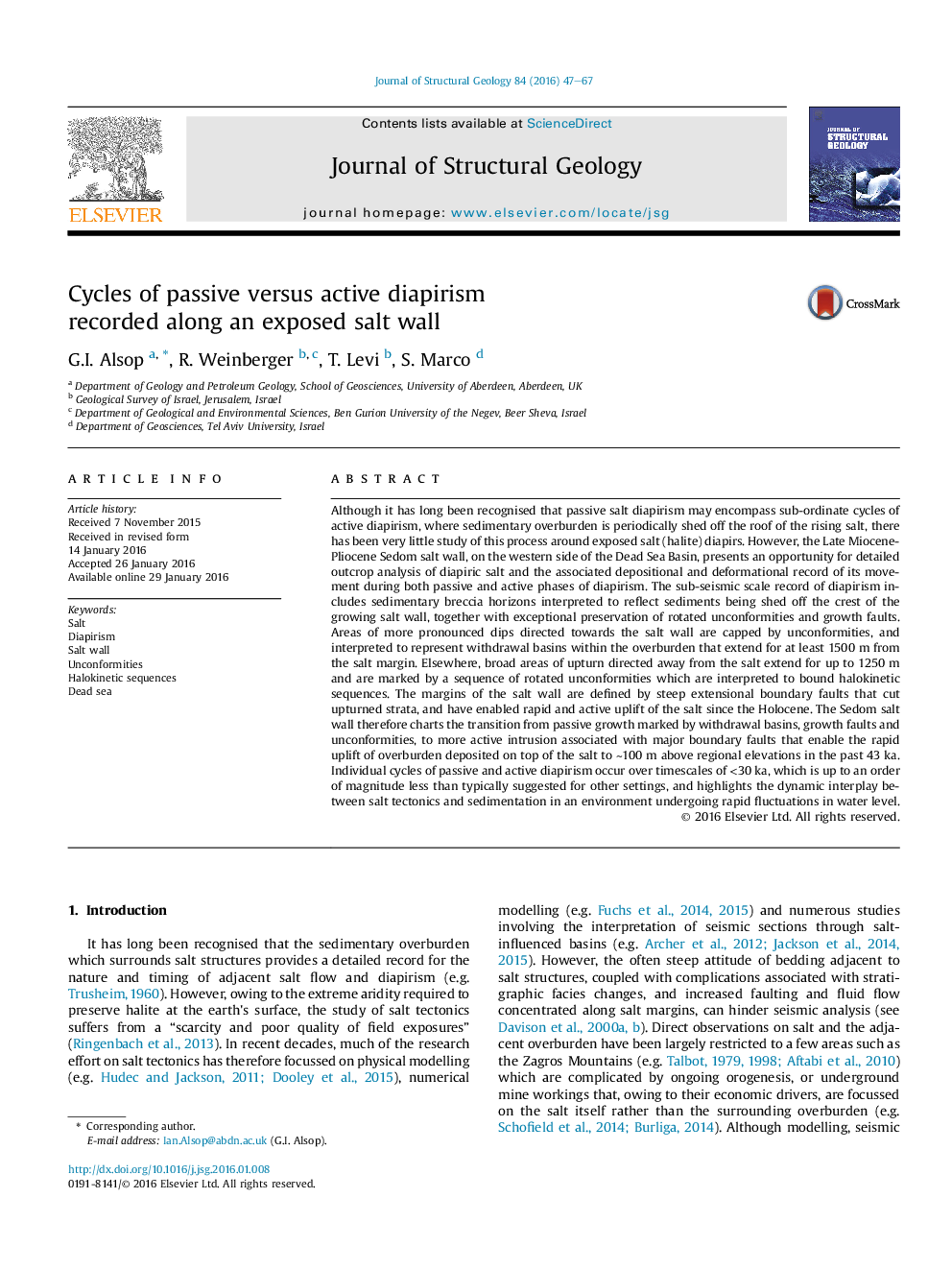| کد مقاله | کد نشریه | سال انتشار | مقاله انگلیسی | نسخه تمام متن |
|---|---|---|---|---|
| 4732931 | 1640496 | 2016 | 21 صفحه PDF | دانلود رایگان |
• Cycles of passive versus active diapirism are examined along an exposed salt wall.
• Individual cycles are shorter than previously recognised and may last <30 ka.
• Active diapirism is marked by rapid ‘piston’ uplift accommodated on steep bounding faults.
• Passive diapirism is marked by upturned bedding and rotated unconformities up to 1250 m from the salt.
• Unconformity-bound sequences may last <40 ka which is significantly less than previous estimates.
Although it has long been recognised that passive salt diapirism may encompass sub-ordinate cycles of active diapirism, where sedimentary overburden is periodically shed off the roof of the rising salt, there has been very little study of this process around exposed salt (halite) diapirs. However, the Late Miocene-Pliocene Sedom salt wall, on the western side of the Dead Sea Basin, presents an opportunity for detailed outcrop analysis of diapiric salt and the associated depositional and deformational record of its movement during both passive and active phases of diapirism. The sub-seismic scale record of diapirism includes sedimentary breccia horizons interpreted to reflect sediments being shed off the crest of the growing salt wall, together with exceptional preservation of rotated unconformities and growth faults. Areas of more pronounced dips directed towards the salt wall are capped by unconformities, and interpreted to represent withdrawal basins within the overburden that extend for at least 1500 m from the salt margin. Elsewhere, broad areas of upturn directed away from the salt extend for up to 1250 m and are marked by a sequence of rotated unconformities which are interpreted to bound halokinetic sequences. The margins of the salt wall are defined by steep extensional boundary faults that cut upturned strata, and have enabled rapid and active uplift of the salt since the Holocene. The Sedom salt wall therefore charts the transition from passive growth marked by withdrawal basins, growth faults and unconformities, to more active intrusion associated with major boundary faults that enable the rapid uplift of overburden deposited on top of the salt to ∼100 m above regional elevations in the past 43 ka. Individual cycles of passive and active diapirism occur over timescales of <30 ka, which is up to an order of magnitude less than typically suggested for other settings, and highlights the dynamic interplay between salt tectonics and sedimentation in an environment undergoing rapid fluctuations in water level.
Figure optionsDownload high-quality image (535 K)Download as PowerPoint slide
Journal: Journal of Structural Geology - Volume 84, March 2016, Pages 47–67
